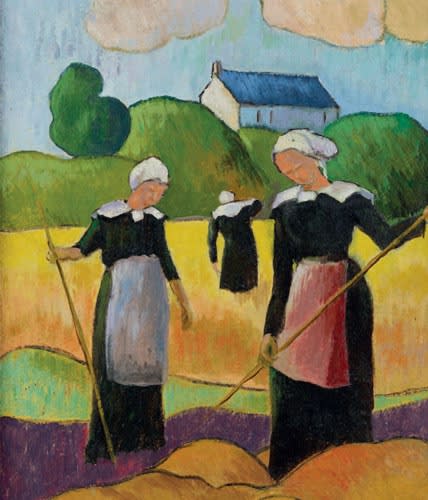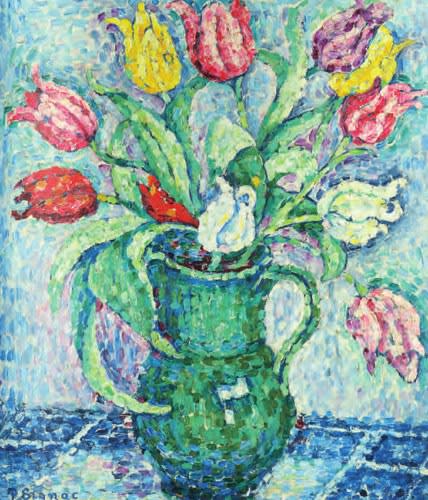Paul Signac French, 1863-1935
Paul Signac was a fervent Neo-Impressionist from early on in his artistic career and would remain one of the most significant artists of the Pointillist Movement.
In 1884, Signac met with Georges Seurat and impressed by his theory of colours, began working in the pointillist style from 1885 onwards. Henceforth, Signac abandoned the short brushstrokes, which were characteristically Impressionist, and began experimenting with juxtaposed dots of colours executing the radiant and meticulous compositions, more individual in style.
Having started a training course in architecture, Signac decided to become a painter at the age of eighteen. With the decision to pursue an artistic career fresh on his mind, the young painter sailed around Europe’s coasts. As an avid sailor, Signac was predominantly known for his vibrant paintings of seascapes and ports, which he encountered on this voyage. By 1892, he began using watercolours, a medium which enabled a looser style and vision, and which he painted in simple strokes. During a visit to London in 1898, Signac examined the works of J. M. W. Turner and Claude Monet, which enriched his artistic and visual vocabulary. The influences of these artists might be seen via the works included in his solo exhibition in 1899 at the Durand-Ruel gallery. From this moment, his style began to evolve in a manner that would inspire the Fauves, who would see Signac’s artwork in various galleries. Among the many artists Signac inspired, was Henri Matisse, whose Luxe, Calme et voluptéwas painted after a visit to Signac’s house in St. Tropez in 1904.
Signac had acquired this house in St Tropez during 1897 and had a large studio built there. Here, he would retreat in the summer months, from Paris, often hosting friends. The small fishing port, which at the time was little known, was to provide inspiration for some of his most celebrated paintings, including The Port of Saint-Tropez, 1901 (The National Museum of Art, Tokyo).
In 1910, reflecting on his life-long endeavours in paint, Signac claimed, “Oil painting is a serious battle, watercolour a playful game”.
The artist’s work is included in numerous museums around the world, such as, the Museum of Modern Art, New York; National Museum of Western Art, Tokyo ; Pushkin Museum, Moscow ; Albertina Museum, Vienna.




